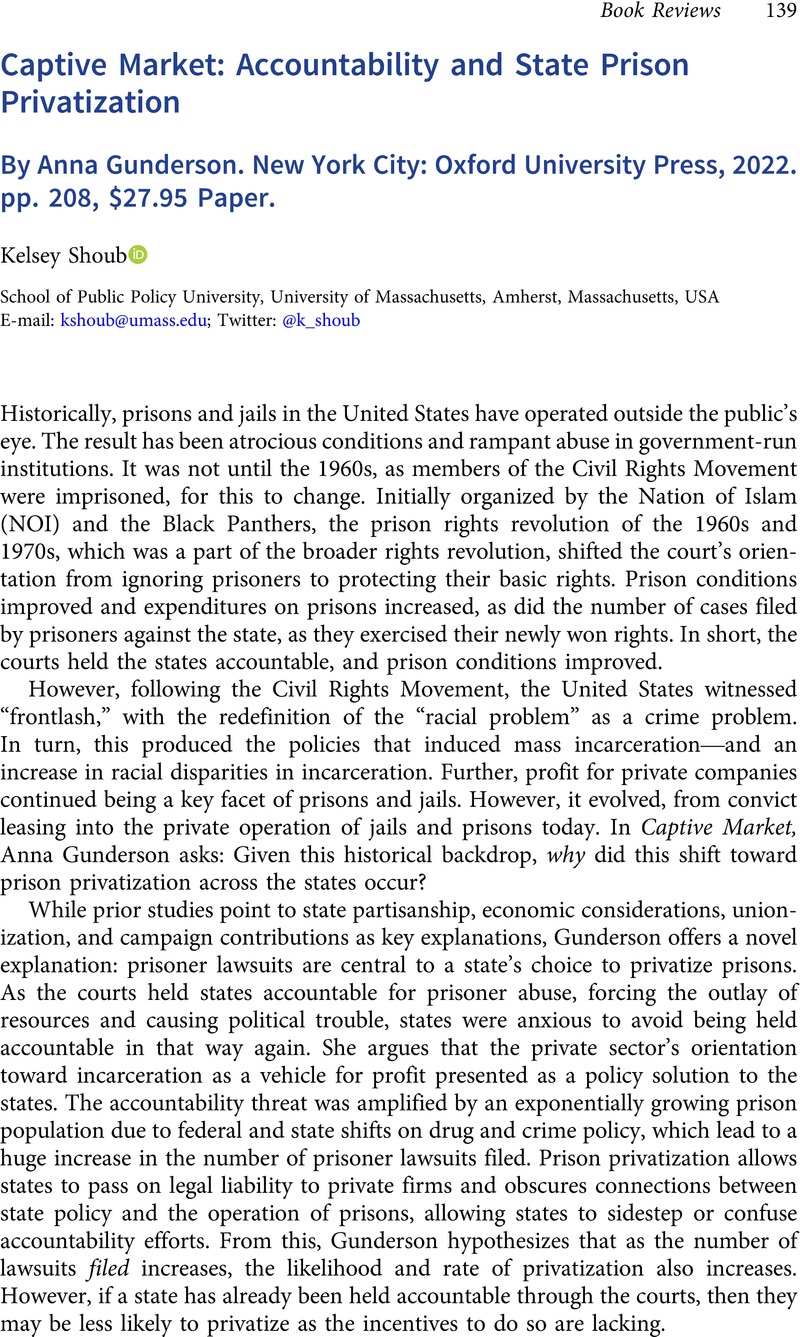No CrossRef data available.
Article contents
Captive Market: Accountability and State Prison Privatization - By Anna Gunderson . New York City: Oxford University Press, 2022. pp. 208, $27.95 Paper.
Review products
By Anna Gunderson . New York City: Oxford University Press, 2022. pp. 208, $27.95 Paper.
Published online by Cambridge University Press: 28 February 2023
Abstract
An abstract is not available for this content so a preview has been provided. Please use the Get access link above for information on how to access this content.

- Type
- Book Review
- Information
- Copyright
- © The Author(s), 2023. Published by Cambridge University Press on behalf of The Race, Ethnicity, and Politics Section of the American Political Science Association


